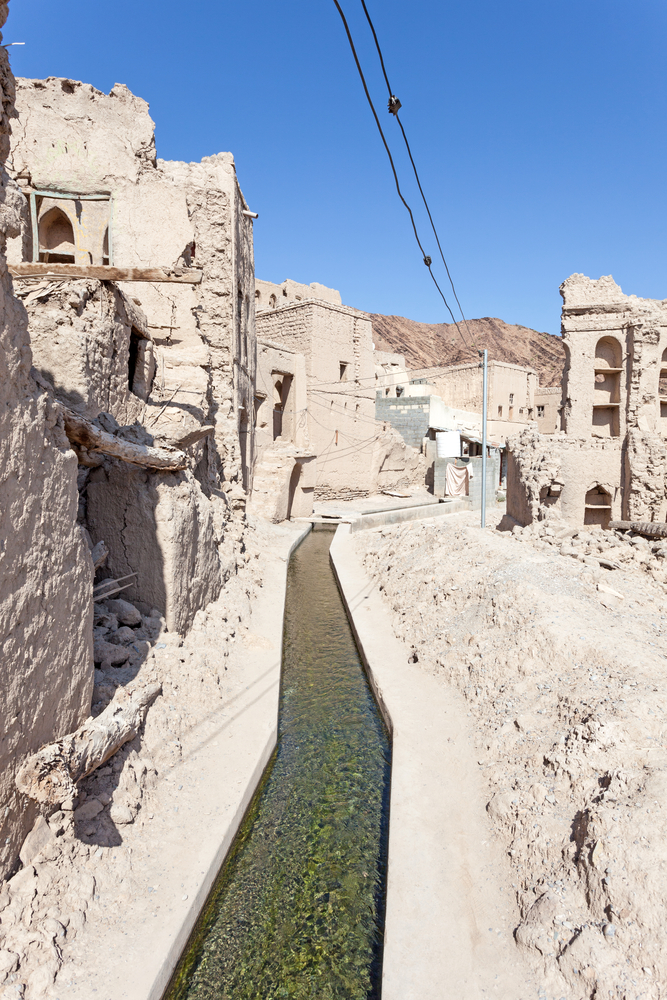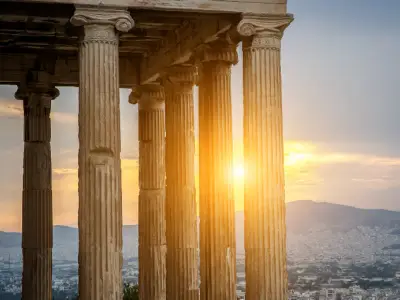Have you ever wondered about the ancient people who laid the foundations for modern civilisation? If you're curious about the origins of writing, the first cities, and the early gods and goddesses worshipped by humanity, you're in the right place. Let’s dive into the fascinating history of the Mesopotamians, the people who lived in one of the most influential regions in human history.
Jump To:
Where was Mesopotamia?
Mesopotamia, which means "land between rivers," was situated between the Tigris and Euphrates rivers, in what is today mostly Iraq, along with parts of Syria, Turkey, and Iran. This fertile land gave rise to some of the earliest human societies, making it a central hub of ancient civilisation.
Recommended for you!
Best SellersThe Birthplace of Cities
One of the remarkable contributions of the Mesopotamian civilisation is the birth of cities. Cities like Uruk, Ur, and Babylon became bustling centres of trade, culture, and governance. The development of urban life in Mesopotamia laid the groundwork for the modern city structure we know today.
Who Were the Mesopotamians?

The Mesopotamian people were a mix of different cultures and ethnicities, including the Sumerians, Akkadians, Babylonians, and Assyrians. Each group contributed to the Mesopotamian civilisation, influencing its language, religion, and social structure.
Are Sumerians and Mesopotamians the Same People?
The Sumerians were one of the prominent groups within Mesopotamia, often considered the first civilisation in the region. While all Sumerians are Mesopotamians, not all Mesopotamians are Sumerians. The term "Mesopotamian" encompasses various peoples who lived in the region over millennia.
Are Mesopotamians Arabs?
The ancient Mesopotamians were not Arabs, as the Arab identity emerged much later in history. However, many Arabs today live in regions that were once part of Mesopotamia, contributing to the rich cultural mosaic of the area.
What Language Did Mesopotamians Speak?
The primary languages of Mesopotamia were Sumerian and Akkadian. Sumerian was used primarily in the early periods, while Akkadian became more dominant later. Both languages were written in cuneiform script on clay tablets.
What Did the People of Ancient Mesopotamia Look Like?
Ancient Mesopotamians had diverse appearances, reflecting the variety of cultures and ethnic groups in the region. In their art, they often depicted themselves with long, braided hair, beards for men, and elaborate headdresses for women.
Mesopotamian Dress
Clothing in Mesopotamia varied by period and social status. Common people wore simple garments made from wool or flax, while the wealthy adorned themselves in elaborate outfits with intricate embroidery and jewellery.
Slavery in Mesopotamia
Slavery was a part of Mesopotamian society. Slaves were typically prisoners of war, debtors, or criminals. They worked in households, fields, and temples, and while they had some rights, their freedom was limited compared to free citizens.
What Did Mesopotamians Invent?

The Mesopotamians are credited with numerous inventions that have shaped human history. Their ingenuity laid the groundwork for many aspects of modern civilisation. Here are some of their most notable inventions:
- Cuneiform Writing: Mesopotamians developed cuneiform, one of the earliest forms of writing. This system used wedge-shaped marks on clay tablets to record laws, trade transactions, literature, and administrative details. It was essential for maintaining records and passing on knowledge.
- The Wheel: Inventing the wheel was a monumental achievement that revolutionised transport and trade. Initially used for pottery, the wheel was later adapted for carts and chariots, significantly improving movement and commerce.
- Irrigation Systems: Mesopotamians created intricate irrigation systems to manage their agricultural needs. These systems allowed them to control water flow from the Tigris and Euphrates rivers, ensuring their crops received adequate water and maximising agricultural productivity.
- Ploughs: The invention of the plough enabled more efficient farming, allowing them to cultivate larger areas of land and support a growing population.
- Sailboats: Mesopotamians also invented sailboats, enhancing their ability to trade with distant regions by navigating rivers and seas more effectively.
- Timekeeping: They developed a sophisticated understanding of time, dividing the day into 24 hours and creating the 60-minute hour and 60-second minute, which we still use today.
- Mathematics: Mesopotamians made significant advancements in mathematics, including the development of a base-60 number system, which influenced our current understanding of time and geometry.
Mesopotamian Achievements
Their contributions go beyond inventions, encompassing various fields such as mathematics, astronomy, and architecture:
- Advanced Mathematics: Mesopotamians developed a complex number system based on 60 (sexagesimal), which facilitated advancements in geometry and algebra. They also created early forms of multiplication tables and mathematical texts.
- Astronomy: They meticulously observed celestial bodies, leading to the creation of one of the earliest known star catalogues. Their observations of the moon's phases and planetary movements contributed to the development of early astronomy.
- Architecture: Mesopotamian architecture was highly advanced, characterised by impressive structures such as ziggurats—massive stepped pyramids that served as religious temples. The Ziggurat of Ur is a prime example of their architectural prowess and religious devotion.
- Art: Art played a significant role in Mesopotamian culture. They produced beautiful pottery, intricate jewellery, and detailed relief sculptures. These artworks often depicted religious scenes, daily life, and mythical stories, providing insight into their beliefs and societal structure.
Mesopotamian Religion and Mythology

Religion in Ancient Mesopotamia
Religion was at the heart of Mesopotamian life, influencing every aspect of their existence. Mesopotamians were polytheistic, meaning they worshipped many gods and goddesses, each believed to control different natural forces and aspects of human life.
The gods were thought to reside in grand temples known as ziggurats, which were towering, stepped structures that dominated the landscape of Mesopotamian cities. These ziggurats were seen as the earthly homes of the deities, where priests performed rituals and made offerings to gain their favour and ensure the community's prosperity.
The relationship between humans and gods was seen as reciprocal. Humans provided the gods with worship and offerings, and in return, the gods granted protection, fertility, and abundance. Every city-state had its patron deity, who was believed to watch over and protect its inhabitants. This patron deity was worshipped above all others and often had a dedicated temple that served as the focal point of religious activity.
Mesopotamian Gods and Goddesses
The pantheon of Mesopotamian gods and goddesses was vast, with each deity playing a specific role in the cosmos and human affairs.
Anu, the sky god, was considered the supreme deity, ruling over the heavens and the other gods. Enlil, the god of air and storms, was another major deity, often invoked for his power over the weather and his role as a divine enforcer. Inanna, also known as Ishtar, was the goddess of love, beauty, sex, fertility, and war, embodying the dual aspects of creation and destruction.
The gods were often depicted in human form but were endowed with extraordinary powers and immortality. They were believed to possess human-like emotions and personalities, which were reflected in the myths and stories that described their actions and interactions.
Each god and goddess had their own set of symbols, rituals, and festivals, which were integral to the religious life of the people. For instance, the festival of Akitu, dedicated to Marduk, the patron god of Babylon, was one of the most important religious events, celebrating the New Year and the renewal of life.
Mesopotamian Mythology
Mesopotamian mythology contains many stories that explain the origins of the world, the relationships among the gods, and human destiny. These myths were passed down through generations, often inscribed on clay tablets in cuneiform script.
One of the most famous Mesopotamian literary works is the Epic of Gilgamesh, which is considered one of the oldest known epic poems. This epic tells the story of King Gilgamesh of Uruk and his quest for immortality, providing insights into Mesopotamian views on life, death, friendship, and the pursuit of knowledge.
Other significant myths include the Enuma Elish, the Babylonian creation story, which describes how the god Marduk defeated the chaos monster Tiamat and created the world from her body. This myth explains the creation of the world and establishes the divine order and the supremacy of Marduk among the gods.
The Descent of Inanna is another compelling myth, detailing the goddess Inanna's journey to the underworld and her eventual resurrection, symbolising themes of death, rebirth, and the cyclical nature of life.
Recommended for you!
Best SellersThe Legacy of Mesopotamia
The legacy of Mesopotamia lives on in many ways. Modern-day Iraq, where much of Mesopotamia was located, is home to numerous archaeological sites that continue to reveal the wonders of this ancient civilisation.
How did Mesopotamians influence modern society?
The Mesopotamians made significant contributions to various fields that continue to influence modern society. They developed cuneiform writing, one of the earliest forms of writing, which laid the foundation for record-keeping and literature.
Their invention of the wheel revolutionised transport and trade, while their advancements in mathematics, astronomy, and law have had a lasting impact. The Code of Hammurabi, for instance, is one of the earliest known sets of laws that has influenced legal systems throughout history.
Modern Descendants of Mesopotamia
While the direct lineage of ancient Mesopotamians is complex due to the many migrations and invasions over millennia, the people living in modern Iraq and surrounding regions are considered the cultural descendants of these ancient civilisations.
Study Mesopotamian History for £29
If you're eager to learn more about this remarkable civilisation, consider enrolling in the Sumerian and Mesopotamian Civilisations Diploma Course offered by Centre of Excellence. This fascinating course is available at a discounted price of £29 and provides an in-depth look at the incredible history, culture, and contributions of the Mesopotamians.













